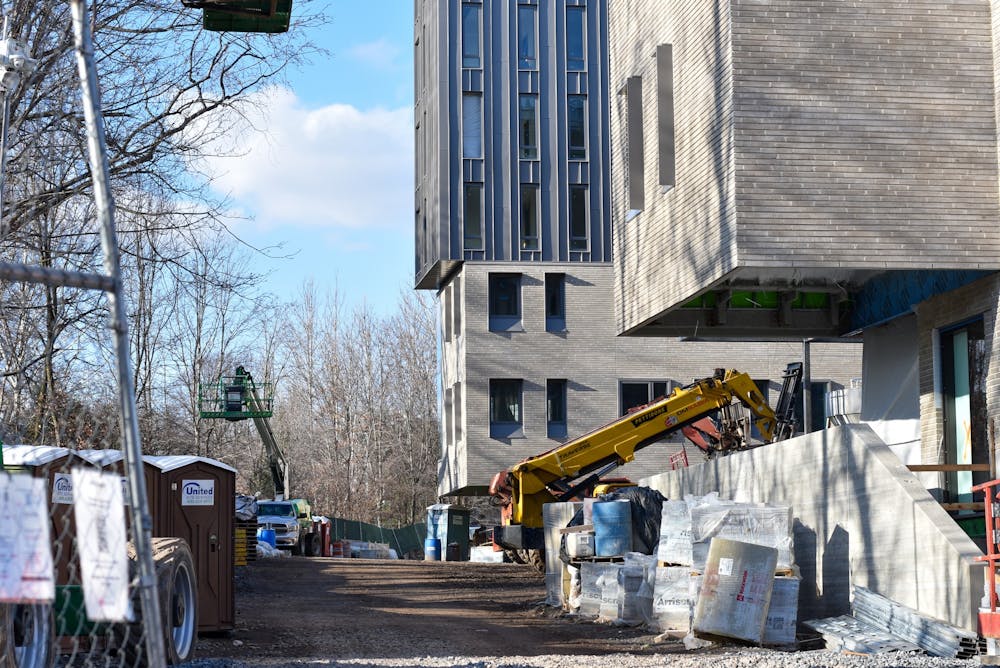Toward the end of the semester, the annual fight among Princeton undergraduates came to a close. Thousands of underclassmen and juniors participated, and as with any fight, the winners walked away with it all while the losers fled the scene with woe. This fight, which took place on MyHousing and had students battling to claim rooms that they will call home for the 2022-2023 school year, is one that we are all too familiar with: room draw.
Historically, room draw in itself has always been confusing for the administration and especially for the students; just last year, the Butler draw was redone, and a room draw error in 2019 sparked outrage that could only be resolved after giving 220 seniors $1,000 in compensation. This year, with two new residential colleges, New College West and Yeh College, beginning to host undergraduate students for the first time starting next fall, the room draw system was completely new, and needless to say, confusing and stressful.
In order for such confusion to be alleviated for future years, the University administration ought to recognize the parts of the process that are causing inconveniences, listen to its students’ suggestions, and improve room draw in future years rather than making it “a separate course that everybody has to take, like a lesson in game theory,” as described by Yongwei Che ’24, a student who took Game Theory last semester.
First, the group that is most heavily impacted by this transition are students who live in First, who used to have priority into Butler but now have priority into New College West.
Che, who is a rising junior in First College, explains he was under the impression that “if any current sophomores in First wanted New College West, they would be able to get New College West because all the info sessions said that we have heavy priority.” However, it turns out that for each residential college, only a limited number of spots were reserved for each upperclassmen grade; the number of those specific spots varied with each residential college. Che did not draw into New College West and will be residing in Pyne Hall for the upcoming school year.
Many more students, not just those from First, have suggested that despite the number of information sessions that were made available, there is still not an adequate way to access information that demystifies room draw.
Speaking personally, most of the information I heard concerning room draw the past two years comes from word of mouth. I have tried to search for information about the process but have not been able to find one source that prepares me for everything I need to know about room draw until writing this article.
Nancy Xu ’24, a rising Independent junior in Forbes College, shares a similar sentiment regarding the problems faced by mixed-class draw groups. The rule is that for all the rooms chosen by that draw group during their draw time, at least one senior ought to be occupying each room. As a result, when all of the residential college spots allotted to seniors filled in, juniors who formed draw groups with seniors and wished to draw into those respective residential colleges no longer could. Xu said, “It’s strange. I’m not sure what the rationale behind that is. I was not aware beforehand. It never occurred to me that this was a rule, and I wasn’t sure where I could find information about room draw.”

In addition to the unclear information surrounding the process, the actual times set up for students to draw into their rooms are also inconvenient. Both factors contribute to the overall stressful sentiment surrounding the process.
While Xu successfully drew into Scully on the first day of room draw, she shared that “My draw time was at 2:45 p.m., and I had to leave lecture early so I could get a room to do the room draw. This is really annoying because I just feel like they could’ve easily avoided it just by doing it during the weekends.”
Xu is right. Current draw times range from 9 a.m. in the morning to 6 p.m. in the afternoon on weekdays which exactly conflict with class times. These draw times could be especially troublesome for large draw groups, as drawing would require everyone in the group to either not be in lecture, or have room draw take precedence over academics. If one person in the group chooses to attend lecture during room draw, then that undermines the entire group’s draw. This then becomes a lose-lose situation, as students shouldn’t have to choose between getting the rooms they want and academics.
Demolishing First College and opening up two new residential colleges are the University’s efforts to improve students’ living conditions. With Princeton expecting to increase its undergraduate student body size by 500 students for all four years starting with approximately 125 more students coming into the Class of 2026, the transition process with housing will certainly be confusing, just like it was this year.

But to improve the current process and make the experiences better in future years, Princeton can start by moving room draw to a more convenient time, such as over the weekends or after lecture has ended on weekdays. Next, make the Zoom session recordings and a one-stop information page more easily accessible from the MyHousing website. Until changes like this are made, the room draw process will continue to be a burden on already overstressed students.
Kelsey Ji is a rising junior from Cambridge, Mass. She can be reached at xingej@princeton.edu.
Correction: An earlier version of this column incorrectly asserted that students who live in Mathey used to have priority into Rockefeller, but now have priority into Yeh College.








